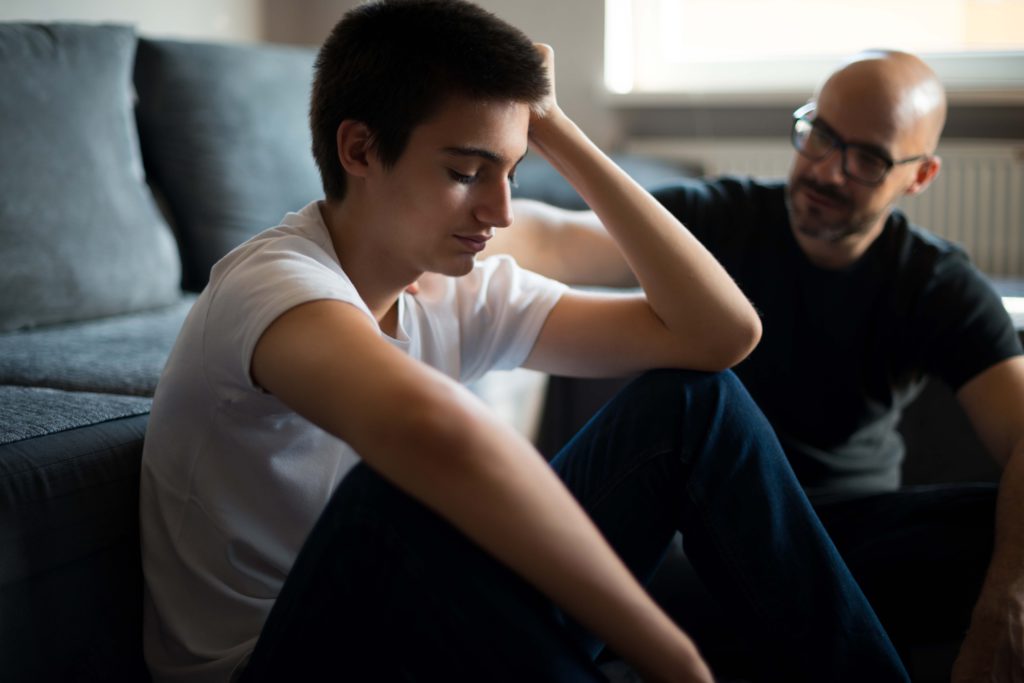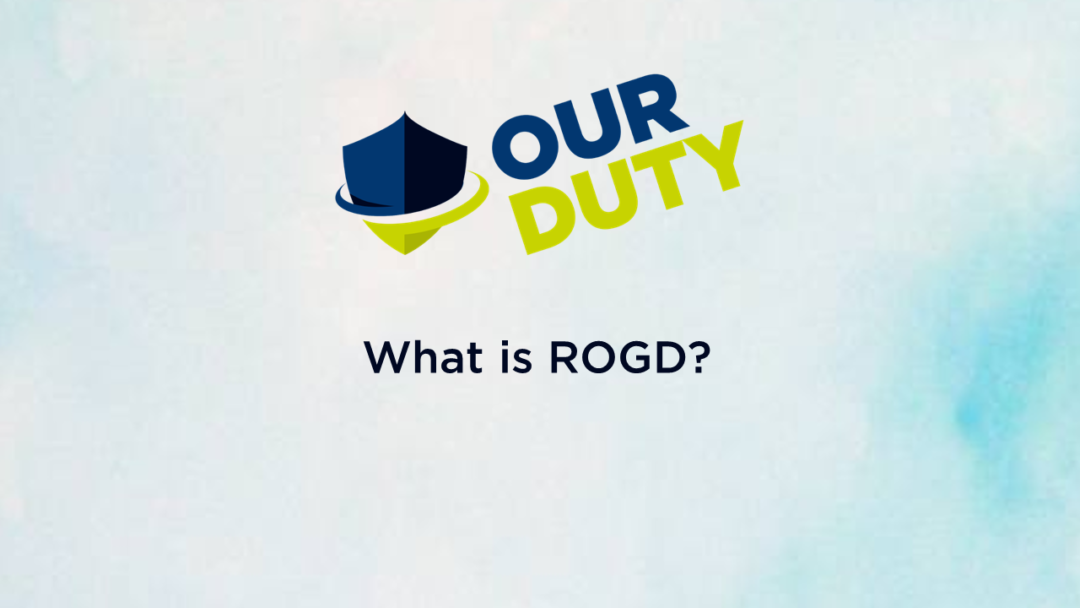| UPDATE: Since the popularisation of the term ROGD in 2018 we now know much more about the phenomenon. Rapid Onset Gender Dysphoria as a name for it is not the best description. We now know that Gender Dysphoria is not always present, and that the onset tends to be gradual accompanied by a combination of indoctrination and rumination. Consequently, we now prefer the term Adolescent Transgender Ideation. |
Rapid Onset Gender Dysphoria (ROGD) is a type of gender dysphoria that begins suddenly, either during or after puberty in an adolescent or young adult.
Rapid Onset Gender Dysphoria affects both sexes, but in recent years there has been a huge increase in cases involving adolescent or young adult females. According to the most recent figures from the Gender Identity Development Service, almost three-quarters of children seeking to change their ‘gender’ are girls (1)
It seems to come out of the blue, including amongst children who may have been anything other than stereotypically masculine or feminine and is associated with intensive use of internet and social media transgender sites and forums, and often occurs in a peer group where one or more friends have become gender dysphoric and transgender identified around the same time.

Does it affect particular age groups?
The age of onset is widely variable, with some as young as 11 and others in their early 20s. Guidance for psychologists acknowledges that adolescence now effectively runs up until the age of 25 for the purposes of treating young people, with evidence of continuing brain development well into the mid 20s or even older (2)
ROGD does not refer to children who have a history of severe gender non-conformity or dysphoric feelings around their sex and body, but is an alternative way of understanding what might be going on when a young person suddenly develops a trans identity.
What do affected “Gender Dysphoria” sufferers say?
Our ROGD children absolutely believe they have gender dysphoria, and believe that the reason they have it is because they are transgender.
They will often tell you they have always felt this way. They might say they hate their sexed body. They will try to rewrite their history, and therefore also the lived experiences of their parents and siblings. They may destroy photos and precious mementos that don’t fit with their current narrative. They may change their name and live their trans lives in stealth. They may block you from social media and other forms of contact. Threats to harm themselves are not unusual.
While any threats should always be taken seriously, it’s worth bearing in mind that, according to Transgender Trend, a website for parents questioning the “trans” narrative, the often cited suicide statistics are from surveys which are not robust and there is no evidence that transition is a ‘cure’ for suicidal ideation (3)
ROGD young people believe their past and present problems, anxieties, traumas and unhappiness, even sexual orientation, can be fixed by creating a new identity and body to match. Escaping from the gendered expectations associated with their biological sex, and becoming their ‘authentic’ selves, gives them control and bodily autonomy, and carries significant social and cultural currency.
Is ‘Sex Change’ an answer to Gender Dysphoria?
No one can actually biologically change sex. Scientific data does not show that gender dysphoria and associated feelings of distress are alleviated in the longer term by medication and surgery (4)
Activists want us to believe that transgenderism is inherent and, unfortunately for affected families, ‘trans’ children have become the means to ‘prove’ this premise. This goes some way to explaining why the existence of ROGD is often questioned, with attempts to close down discussion and suppress research.
Is being ‘trans’ a cult-like phenomenon?
Support and cheerleading for trans-identified youth comes both from real life and online encouragement. Parents who don’t immediately affirm their ROGD children and support their social and medical transitioning run the risk of being branded as ‘transphobic bigots’ and may be shunned or estranged, depending on the age of the young person. Of course it’s not transphobic for parents to be concerned about medical transition, to want their children to pause before taking drastic action, or to have different views about the existence of an innate gender identity.
We think the ‘affirmative model’ of medical treatment is wrong
The NHS says that gender dysphoria is a recognised medical condition and is not “a mental illness.” (5) Yet, by its very nature, diagnosis has to rely on self-identification and subjective feelings. There are no definitive tests that can be carried out and assessment must rely on self-affirmation. Parental voices are excluded by many clinicians, and ignored in favour of affirming a child-only perspective.
A number of therapists have spoken out recently about the pressure they are under within their clinics, from a culture that has allowed lobby groups to drive a narrative that insists self-affirmation is adequate for clinical diagnosis. Some clinicians have reported that an over-simplification of the process means they are not able to apply their own professional training, experience and knowledge to the young patients they see, especially for those with more complex needs such as autism.
Kids are coaching each other online
A quick look on the internet throws up a host of transgender vlogs acting as guides for young people preparing to visit their own GP or clinician. Thought-terminating clichés are everywhere: ‘Some people are trans, get over it!’ Tips and feedback are shared on exactly what to say to achieve a transgender diagnosis.
Once this is obtained, the path opens up for teenagers and young people to access life changing medication and radical surgery.
Research is proving parents’ lived experiences
Rapid Onset Gender Dysphoria is a definition many parents recognise and understand, because it’s their direct and actual experience of what has happened to their child. Some parents prefer the term ‘Post-Pubertal Gender Dysphoria’ as this better reflects their own child’s individual journey; others prefer to replace ‘gender’ with ‘body’ dysphoria.
One of the main sources of evidence for ROGD comes from the ground-breaking work and research done by American academic Dr Lisa Littman (6)
In 2018 Littman published a paper that studied parental reports of adolescents experiencing Rapid Onset Gender Dysphoria. The conclusions suggested that ROGD is not an indicator of transgenderism.
The report attracted a large amount of hostility from transgender groups and activists online. Littman’s research methods were called into question, suggesting she was promoting harmful misconceptions about transgender people.
A rigorous re-review followed, and an expanded version of her paper was published in March 2019, making clear that her research and conclusions are robust and that ROGD may invalidate a clinical ‘transgender’ diagnosis for a child or young person.
Further research is needed to help our families
Littman said this was a new phenomenon and that activists cannot claim to know what is best for this group of young people because nobody yet knows. A cautious approach by parents is valid, as there is no evidence to show that affirmation and medical transition is in their children’s best interests.
Other sources of data, and views from parents and clinicians, give additional weight to these findings and analysis (7). As Littman herself, says: “I look forward to future research on this important topic. Gaining a better understanding of the development of gender dysphoria will allow us to better help the current population of teens and young adults experiencing it.”
Many questions requiring answers
Why have so many young people latched onto transgenderism? Why are so many professionals and organisations unwilling to allow the critical thinking and open discussion needed to properly investigate this multifactorial and complex issue? Why is the testimony of detransitioners being disregarded?
Our Duty is to ‘Stop the Harm’
As parents we can provide the key to opening up many areas that have not yet seen the sunlight. We can help join the dots. But if the wisdom and perspective that parents bring to this issue continues to be ignored, we will be enabling a generation of vulnerable young people to cut themselves off from their own bodies – with potentially disastrous consequences.
Links and references
(1) https://www.thetimes.co.uk/article/surge-in-girls-switching-gender-pwqdtd5vk
(2 https://www.bbc.co.uk/news/magazine-24173194
(3) https://www.transgendertrend.com/the-suicide-myth/
(4) https://www.cms.gov/medicare-coverage-database/details/nca-proposed-decision-memo.aspx?NCAId=282
(5) https://www.nhs.uk/conditions/gender-dysphoria/
(6) https://www.transgendertrend.com/lisa-littman-study-republished-plos-one/ and Michele Moore’s chapter on ROGD, in the book “Inventing Transgender Children and Young People”, edited by Michele Moore and Heather Brunskell-Evans, published by Cambridge Scholars.
(7) This refers to new data from parent-led organisation ‘Gender Identity Challenge Scandinavia (GENID) and from the views of clinicians from gender identity development services in the UK and Scandinavia, recorded by Moore and H. Brunskell-Evans. Source: Michele Moore’s chapter on ROGD, in the book “Inventing Transgender Children and Young People”, edited by Michele Moore and Heather Brunskell-Evans, published by Cambridge Scholars.

